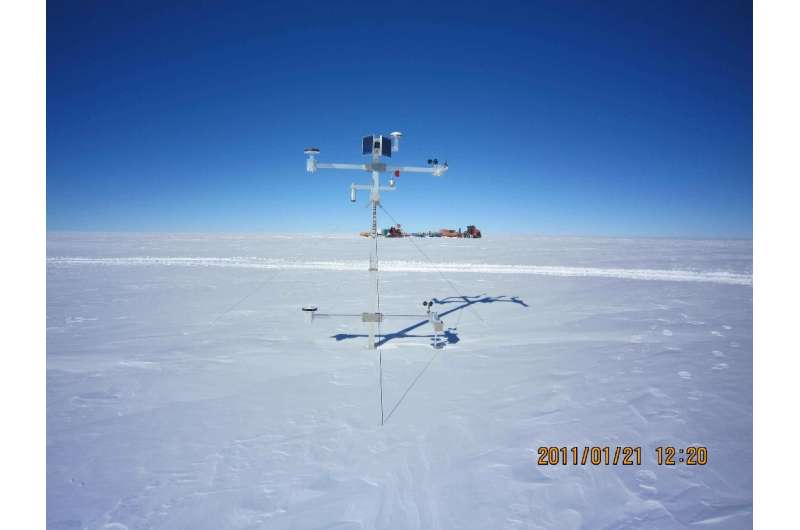Antarctic Mesoscale Prediction System precipitation products prove to be reliable

Owing to its huge volume, the Antarctic ice sheet has the potential to cause a global-scale sea level rise. Not only that, but it is also closely entwined with many important aspects of the Earth-atmosphere system, such as the global water cycle, the atmospheric heat cycle, ocean temperature and salinity, and ocean circulation. Thus, Antarctic climate change and ice mass variability have emerged as key issues of concern in many recent studies.
However, ice sheet mass balance measurements are insufficiently accurate, not least because of the sparseness of in situ and satellite measurements over the Antarctic as a results of its harsh environs. Thus, the Antarctic Mesoscale Prediction System (AMPS) is a key tool for studying precipitation over the region. Moreover, the data generated by AMPS will be used more widely if shown to hold up to careful scrutiny.
To evaluate the performance of AMPS in terms of precipitation, Yihui Liu—an MSc student at Shandong Normal University, analyzed the snow accumulation changes at nine automatic weather stations (AWSs) on the Ross Ice Shelf, Antarctica, from 2008 to 2015. The findings are published in Advances in Atmospheric Sciences (Liu et al., 2017).
The study found that the number of snow accumulation events varied from one station to another during the study period, thus demonstrating geographic dependence. The interannual variability of snow accumulation was too high to determine its seasonality based on the AWS observations and limited time coverage.
Comparison between the AMPS and AWS snow height measurements showed that ~28 percent of the AWS events were reproduced by AMPS. Furthermore, significant correlation was found between AMPS and AWS coincident event sizes at five stations. The findings suggest that AMPS has a certain ability to represent actual precipitation events.
More information: Yihui Liu et al, Evaluation of the Antarctic Mesoscale Prediction System based on snow accumulation observations over the Ross Ice Shelf, Advances in Atmospheric Sciences (2017). DOI: 10.1007/s00376-016-6088-9
Provided by Chinese Academy of Sciences




















